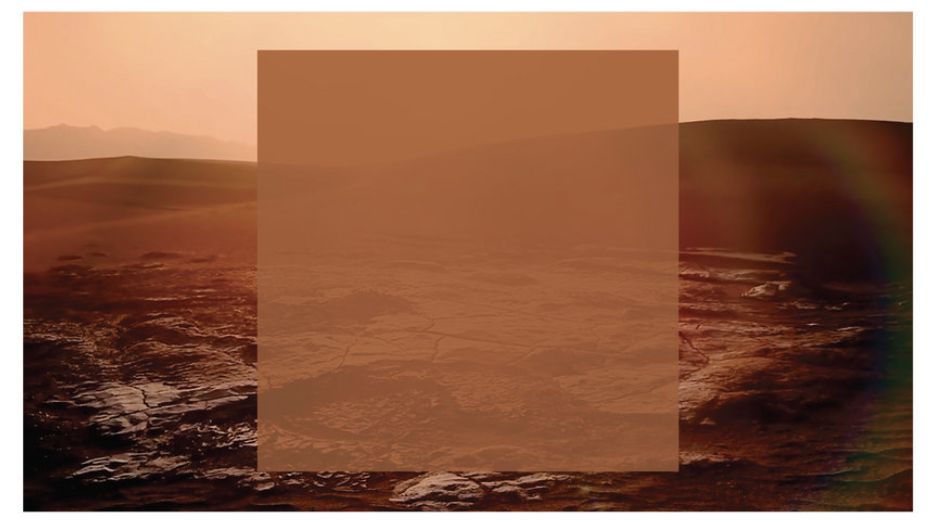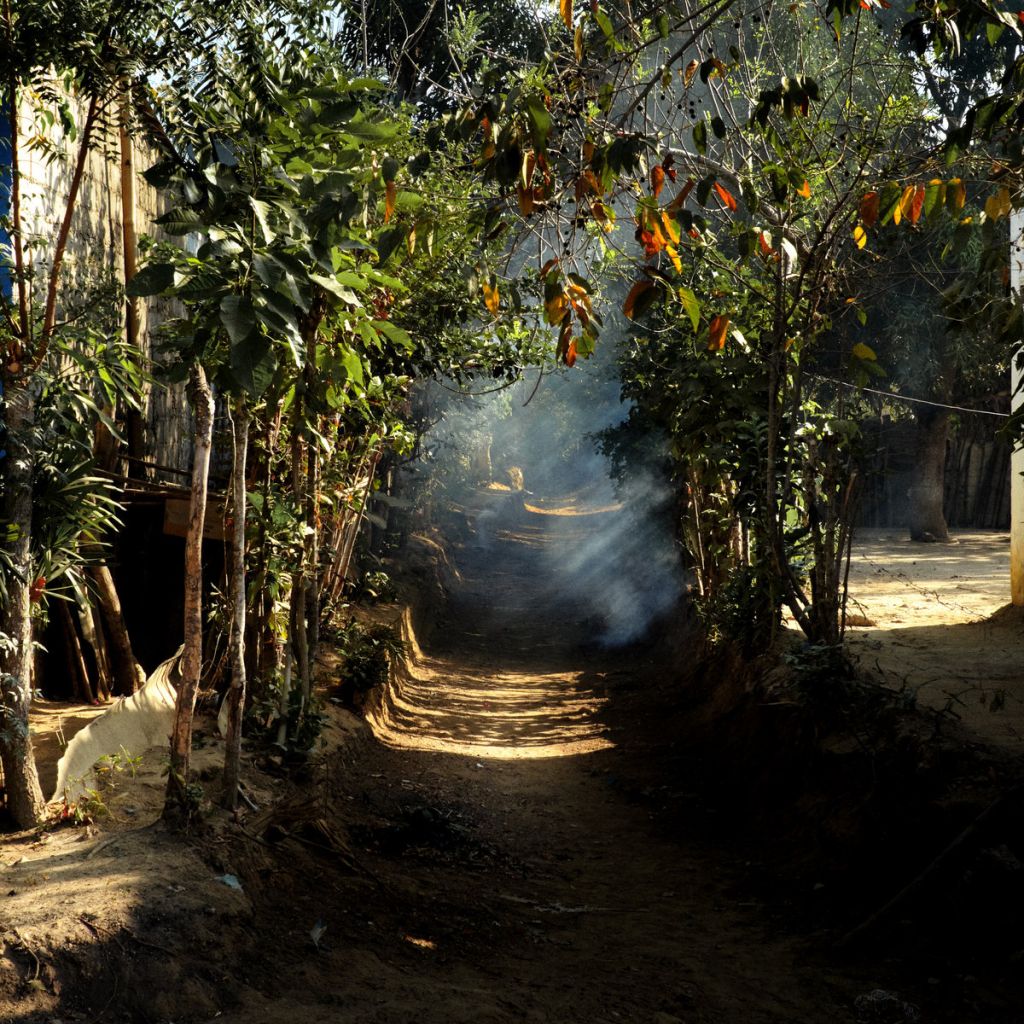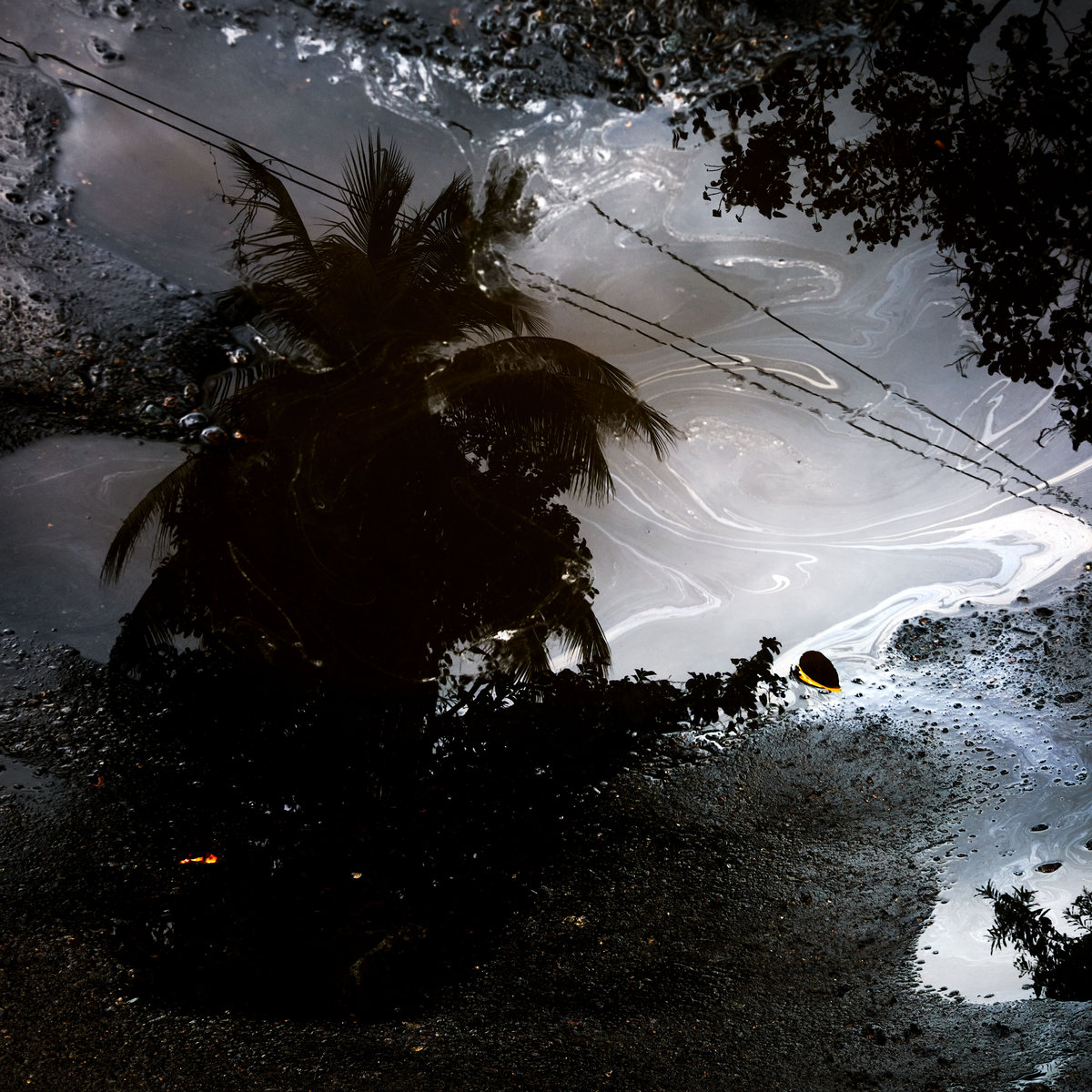Interview by Olya Karlovich

In his music and art practice, Lamin Fofana explores the questions of movement, migration, alienation and belonging. And not only the historical context but also personal experience influenced his unique approach to working with sound as a creative medium. As a child, the artist and his family left their home in Sierra Leone and fled to Guinea due to the exhausting civil war. When he became a teenager, they immigrated to the United States.
In New York, Fofana has become a prominent figure in the local electronic music scene as a member of the Dutty Artz platform/community and the owner of the underground label Sci-Fi & Fantasy. But, despite all these merits, the artist relocated to Central Europe in 2016. The next stop on his way was Berlin; there, he gradually began to move away from the club environment, delving more into the art world.
Fofana’s projects have ideological overtones. Focusing on the historical movement of Black people across the globe, forced or not, turn the spotlight on the legacy of migration and the consequences of colonial thinking and oppression.
In the latest album trilogy, Ballad Air & Fire/Shafts of Sunlight/The Open Boat, released via his other label Black Studies, Fofana continues to explore ambient music, reflecting on our pandemic-altered perception of time, disruption of the European approach to art; and reimagining the geography of the African people diaspora.
Invisible artists’ collaborators in this project were the poets Amiri Baraka and Kamau Brathwaite. For Fofana, working with texts is a full-fledged dialogic exchange. The insights he receives from his favourite authors later materialise in his works. The artist himself calls this approach “transmuting text into sound”.
The auditory side of Fofana’s works also has a distinctive style. His music is not background but requires active listening. The narratives of field and archival recordings are intertwined with external noises and synth melodies. There is a balance between enveloping meditativeness created by repetitive figures and expressively clear accents; pauses and slowdowns have a vital role to play here. It is fascinating how Fofana skillfully experiments with temporality in his latest releases, stretching time and space and denying linear structures.
The artist strives to collapse familiar boundaries in his sound and multisensory installations. He creates a kind of disorienting space and states that allow the audience to imagine alternative ways of being. So, as part of the commissioned program Terrassensaal in Haus der Kunst, Fofana presented his audio-visual work, A call to disorder, in one of the gallery’s corridors. By placing sound between the inner and outer spaces of the museum, he blurred the line between conscious and unconscious. Thus, putting his spectators in a dreamlike, in-between state.
Fofana’s other two sound installations, Sounding Water 2022 and Life and Death Underwater 2021 are currently on display at Tate Liverpool as part of the Dark Water exhibition. This project is a collaboration of sorts between musician and British painter Joseph Mallord William Turner. Fofana’s immersive soundscape echoes Turner’s canvases, providing a new perspective on the power and politics of the ocean as a key symbol in both artists’ work.
In early December, Fofana’s music catalogue also expanded with two new releases. The Unsettling Scores album appeals to climate change issues and environmental disasters — from hurricanes in the Caribbean to mudslides in West Africa. And with his second record, Here Lies Universality, the artist continues to explore how the historical processes of Black people’s displacement affect today’s unequal socio-political and economic dynamics. Fofana’s works immerse the listener in deep thought but definitely do not offer them any set endings. These are stories inscribed in much broader cultural and historical contexts.



For those of our readers unfamiliar with your work, can you please elaborate more on your practice of translating the writing of pioneering black authors — reading history, poetry, manuscripts, etc. — into sound? What is your approach to working with texts as a creative source? And why is the written word one of your key sources of inspiration?
It’s hard to give an explanation or an account of my method. There are approaches to what I do. I arrive at this practice of transmuting texts or stretching words, ideas and concepts into sound unexpectedly – thinking about the present moment and learning that the instability, the precarity, the brutality, the distribution of violence, and the exploitations of vulnerable people, the everyday struggle, all the uncertainties, all anxieties of the present world are connected to historical processes and forces still very much invested the disintegration and continual fragmentation of our lives, our loves, and the times. I learn through reading and listening to poets and historians. I listen
carefully, and I read slowly. I do my best to pay attention – to read as if it really matters. It doesn’t mean I hear everything correctly or that I don’t misread things. I am careful not to be inattentive or passive. I am constantly going back, rereading, turning things over and re-engaging certain writers, experimenting with sounds… that perpetual fragmentation I mentioned might manifest in a form of arpeggiation, for instance. Things like records occasionally materialize out of these dialogical exchanges.
Exploring ideas of identity, migration, displacement and race, your work combines the existential and the social. What challenges do you face in combining and balancing global historical-cultural narratives and contemporary socio-political dynamics with personal experience in your music/art? And what is usually the starting point for your projects — personal experience or some global issues?
Again, it’s hard to pinpoint the starting point of a project, but one thing’s for certain – writers, thinkers and scholars like W. E. B. Du Bois, Amiri Baraka, Sylvia Wynter, Kamau Brathwaite, Aime Cesaire, Edouard Glissant, yeah, mostly these giants of the last century whose words continue to reverberate, along with contemporary writers, historians, and poets like Dionne Brand, Fred Moten, Robin D. G. Kelley, or the great Ngugi wa Thiong’o — are always with me, their voice in my head, informing my thinking, helping me wrap my head around certain things, helping me move through or around certain things by providing insights, offering new concepts and frameworks for prying
open new possibilities or simply just pointing or tilting my head in a certain direction. Suffice it to say; they offer deep insights and lessons that can aid us in surviving and transcending these turbulent and uncertain times.
There are multilayer problematics behind your latest album trilogy – Ballad Air & Fire, Shafts of Sunlight, and The Open Boat. The project revolves around our perception of time changed by the pandemic, the destruction of European colonial notions about music and art, and the legacy of migrations. What challenges did you encounter during the realization of this complex concept? How was the idea of the triptych born and developed?
I don’t know. I’m still wrapping my head around these ideas, and I think there’s a lot left to be said, and I’m moving at a certain pace. I feel I have to shut up and keep it moving. I usually work alone, even though I’m together with all these writers, poets and historians; their voices crowd my headspace. I’m the one who invited them, and I’m not sure if some of them would even accept the invitation. Anyway, during the production, when things were coming together, I would sit down in front of a keyboard and laptop, and I would get flooded with ideas, and I would
have to step away, take a break and, go for a walk, write things down.
It was heavy, and I had to step back and reassess, imagining how to move, how to approach certain things, and I had to position myself in a sort of dynamic range and be ok with multiple structures and things moving and not all made sense immediately — some of the narrative structures are only beginning to make sense now, after a year or so. It wasn’t a logical, sense-making exercise. It was emotional, and all through it, there was a continuous thrumming, a certain feel. I didn’t set out to make a triptych, but the concepts and ideas I’m working with are heavy, extraordinary, and beyond me, so the work overflows. Beyond the latest trilogy, several new albums are coming out before the year’s over. Working in a trilogic form, I don’t necessarily start with that in mind or even think about that when I’m working. It’s just the way it came together.
Would you consider that Rajaton has an intention that is socially and politically critical? There seems to be in this a marked intention about hierarchies and a kind of epistemological position regarding the abolition of limits and the expansion of knowledge. Could you expand a little more on this conceptual aspect of the label?
I have always tried to keep politics away from music and art, not use them as a vehicle… But it seems a bit naive position these days. It’s just too hard to ignore or separate all the idiocy and horror around us. I have no answer, really, at all. I have no idea what the world will look like in two years. I guess I’m processing my own take on this all, what my responsibility is, and if it’s ok to hide behind the art and all that and not take any action. That’s actually something I’ve been meditating on quite a bit, and one of the forthcoming EP series is called “Hide Behind The Silence”.
I admit I have been fully cowardly, just escaping the world in the safety of the studio and reading books about all the madness, history, and current happenings but never actively doing anything. Are the music and creative action worth anything in this bigger picture? That’s what I’m going about privately and maybe a little bit with the label. The label will not be anything except an outlet for my own works, so I can safely say the label won’t be political or such, but I’m not sure about my own work. I try to resist actually putting a political shadow over my work. But let’s see.
In this latest album trilogy, you continued your previous explorations in ambient music, which in your case also means stretching the boundaries between ambience and noise. This is not the first time you have used surface noise in your compositions. Can you tell us a little more about how you utilize noise in your musical/art practice in an attempt to overturn classical western music theory?
Was it Moodymann who said, “life comes with background noise”? Yeah, we can talk about how music theory is not a universal thing and how it’s a very specific thing culturally, and it’s 18th-century European art music. But I also just like the idea of collapsing boundaries – in this case, the boundary between music and “noise”. Field recordings of chirping birds or natural sounds like running water, the crackle of vinyl or the hiss of tapes, are all sounds I use, not just for abstract processing and opening up possibilities and spaces that allow/access to recognition and memory, I’m attracted to these sounds.
You also express ideas through multi-sensory installations, bringing a cross-disciplinary vision to your practice. How would you define your approach to connecting different human senses and levels of perception to create an immersive experience?
In performances and installations, one of the aims is to escape the hierarchies of the senses or at least create a sensation, a sort of disorientation to destabilize the perpetual ordering of things which is a habit inherited from colonial systems, the hierarchy of knowledge and whatnot. I am interested in creating spaces that allow for dreaming, imagining other ways of being and foregrounding nonhierarchical nonlinear thinking and experience. While sound is my primary medium, I like to create spaces otherwise unexpected and open to other possibilities.
There are two more of your records coming out before the year-end. One of them is “Here Lies Universality”. Can you share with us some details about these future projects? And what else is next for you?
Yes, the two other records coming out before the year’s over are Unsettling Scores, which will be
out on Peak Oil and Here Lies Universality, which is coming out on Avian.
Solitude or loneliness, how do you spend your time alone?
I always hear the voice of Billie Holiday singing the jazz standard, Duke Ellington’s composition “(In My) Solitude”. So you already know where this is going to go. It’s so painful to hear sometimes. I like being out of the way, doing my thing in my little corner and occasionally surfacing when I have something or a few things to share.






